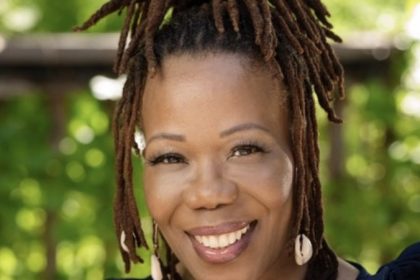Bonnie-Jill Laflin has quite the resume, being the first female NBA scout and the first woman to dance professionally for three teams in two sports. With her experience as a court cheerleader and sports broadcaster, Laflin wants to share the stories of other women who have been through trials and tribulations in sports and how they overcame and got to where they are today. Laflin wrote the book In a League of Her Own: Celebrating Female Firsts in Sports to give flowers to those women making a difference in the space.
Laflin spoke with rolling out about her book and some of the women she decided to honor.
Tell us about your book.
There are so many people who are like, “I want to empower women, I want to do this and that,” but they don’t act on it. There are so many things that they wanted more of, I hate to say it, but [it’s] more of a train wreck or like a tell-all. And I’m like, “I’m not doing a tell-all; this is very important.”
The book is so timely. You get to see people like Jackie Joyner-Kersee. People like the younger generation don’t know about Jackie. Also, Laila Ali, and not just about the stories about Laila and her dad. She doesn’t always want to talk about her dad; she wants to talk about her journey and how tough it was to be under the spotlight of her dad. There are so many different stories in there that I wanted to be able to tell that haven’t been told for women. The trials and tribulations and just the sacrifices [of] these women, whether they’re a mother, a professional athlete, or in the front office, or the things that are taboo to talk about, it’s in the book. Danica Patrick saying she started crying talking about the fights that she had to have with other drivers. She’s like she wasn’t trying to be like, “Oh, man,” she was just trying to say, “Treat me like a driver, just like one of you.”
There were so many things that I thought were very relatable for males or females that you could get out of the book, and I just wanted the younger female generation to know that there is a space for them. We have stories about the inner-city kids and they’re like, “I don’t have money to go to college, or I don’t have this or that.” All the different ways and things that these women had to do to navigate to get to that point, I just thought it was something that was so important.
















